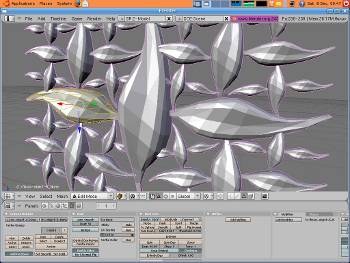 This Diwali, who will bring freedom to Ram? This ancient festival of light celebrates Lord Ram delivering freedom to Sita, and the world, from the tyranny of Ravana. It celebrates the 2D triumph of good over evil.
This Diwali, who will bring freedom to Ram? This ancient festival of light celebrates Lord Ram delivering freedom to Sita, and the world, from the tyranny of Ravana. It celebrates the 2D triumph of good over evil.
Cut to the 21st century. Ram has aged gracefully. He looks more muscular and more global: a blend between American comic super-heroes, Japanese manga characters, and Amar Chitra Katha gods. This modern avatar of Ram is now trapped in the RAM of high-end computers, rapidly rendered pixel-by-pixel by multi-headed CPU demons. The illusion of Maya is now complete. Everything that seems real is nothing but 3D software spinning its magic.
Big game hunting
That software, alas, is where Ravana hides today. Proprietary 3D software is the new Lanka. You can see signs of its growing influence in every city across the Indian sub-continent. Dozens of animation schools have suddenly opened shop across India. Fierce monsters and large-eyed goblins adorn their facades. The animation and VFX industry is the new goddess of wealth — according to a KPMG-FICCI report released this year, the industry is currently at Rs 3.2 billion, and will grow to Rs 46.6 billion by 2014.
According to leading industry sources that I spoke with, authoring 30 minutes of 2D animation, outsourced to any reputable and experienced animation studio in India is quoted for between USD 45,000 to USD 50,000. The same segment in 3D, with additional creative services like sound-design, storyboarding, and character-development costs significantly more. And then there are games people play. More often with their mobile phones, but there are 3D games on gaming devices, especially Playstations and XBoxes, and
even embedded 2D games in devices such as home TVs. The gaming industry in India is growing at 32 per cent — and will touch Rs 32 billion by 2014.
Dimensions beyond the known
Industry figures like these would awaken anyone’s Kundalini. Hordes of students are indeed inspired to head to the nearest animation sweat-shop, never mind the exorbitant fees. Even then, the huge demand for professionals will remain unmet. Yet, there’s another dimension even Michio Kaku doesn’t talk about.
These courses delve only into proprietary software. These students will spend years of hard work mastering skills and developing habits with tools that will enslave them — tools that cost thousands, and sometimes tens of thousands of dollars, and need to be purchased repeatedly every two or three years.
In fact, the reason these courses are so expensive is mainly because of the cost of these software! So let me say it boldly: animation-education is largely about selling expensive software to a captive audience. Students pay to get ensnared.
India can create a thriving exports (and even domestic) industry in animation and gaming, by chucking this new-age digital imperialism, and embracing free software. Try Blender3D. This muft and mukt software is increasingly being adopted by studios and artists worldwide, to create highly-professional and award-winning commercial projects.
It’s a shame that not a single animation college or institution has a business-model adapted from the Blender Foundation and the Blender Institute. There’s not a single certified Blender guru in India yet, though Gaurav Nawani is the editor for the international e-magazine, BlenderArtist. There are quite a few design, animation, and gaming studios in India that offer services rendered through Blender, if you excuse the pun.
To achieve that figure of USD 46.6 billion and USD 32 billion, India needs tens of thousands of Blender-driven start-ups and professionals. Everyone can blend. Engineering students can enlist for Google Summer of Code or similar projects to further develop Blender’s features. Arts and design students can learn skills-for-keeps with this free software-for-keeps. Authors can write books and tutorials. Colleges, institutions, and even government organisations can devote spare computing power to offer community render-farms that are truly massive, and free.
Please pause and check out vswarm.com for inspiration. The noted industry veteran, Ajay Joshi, feels that 3D concepts and software must be taught as part of the main syllabus in schools across India. I agree, but add: only with free software, please! Eventually, India can host its own Blender conference and awards. Heck! We’ve even got a mythical monkey-god for our desi version of the Blender ‘Suzanne’ awards.
Welcome to Freedom Yug. The time has come to free Ram and celebrate a Happy 3Diwali.
Verbatim copying, publishing and distribution of this article is encouraged in any language and medium, so long as this copyright notice is preserved. In Hindi, muft means “free-of-cost”, and mukt means “with freedom”.
Feature image courtesy: dave-griffiths. Reused under the terms of CC-BY-SA 2.0 License.










































































I really liked the article and mailed the link to all my friends. I see students paying huge amount for animation courses that have proprietary software, while the muft and mukt alternative is available and competitive. The same is also true for software too. We have muft and mukt software, plus the documentation is free, plus their are people to help you out.